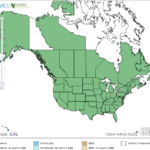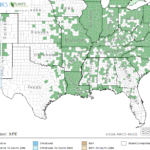Juncus tenuis
USDA, NRCS. 2018. The PLANTS Database (http://plants.usda.gov, 28 March 2018). National Plant Data Team, Greensboro, NC 27401-4901 USA.
Illustration: USDA-NRCS PLANTS Database
What is Poverty Rush?
Physical Characteristics
Leaves:
- Flat
- 0.02-0.03 inches wide
- Soft
- Almost as long as the stem
Flowers:
- 1.19-3.5 inches long
- About 1/4-1/5 the height of the plant
- 15-25 flowers
- Branches 0.01 inches thick
- Standing alone
- 0.13-0.16 inches long
- Greenish-white
- Sharply pointed
- Soft
Fruit:
- Dry seed pod
- Egg-shaped
Stem:
- 316-17.72 inches tall
- Hallow
- About 0.02 inches thick
Where Does it Grow?
Poverty rush can be found in wet sands and along the edges of ponds, lakes, and streams.
Pros and Cons of Poverty Rush
Submerged portions of all aquatic plants provide habitats for many micro and macro invertebrates. These invertebrates in turn are used as food by fish and other wildlife species (e.g. amphibians, reptiles, ducks, etc.). After aquatic plants die, their decomposition by bacteria and fungi provides food (called “detritus”) for many aquatic invertebrates.


